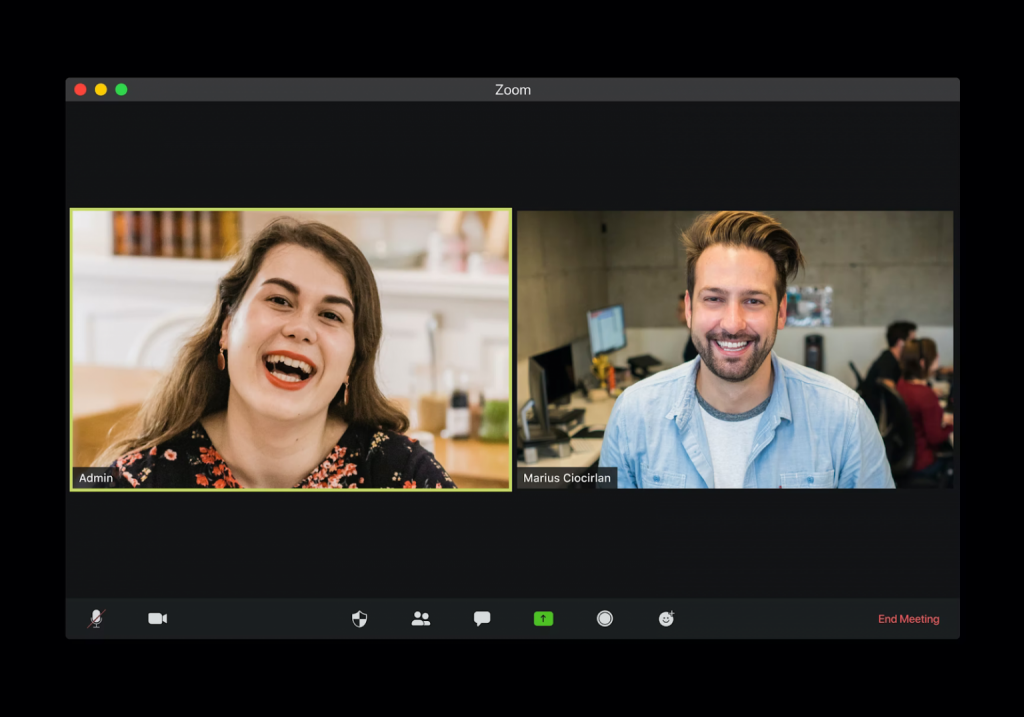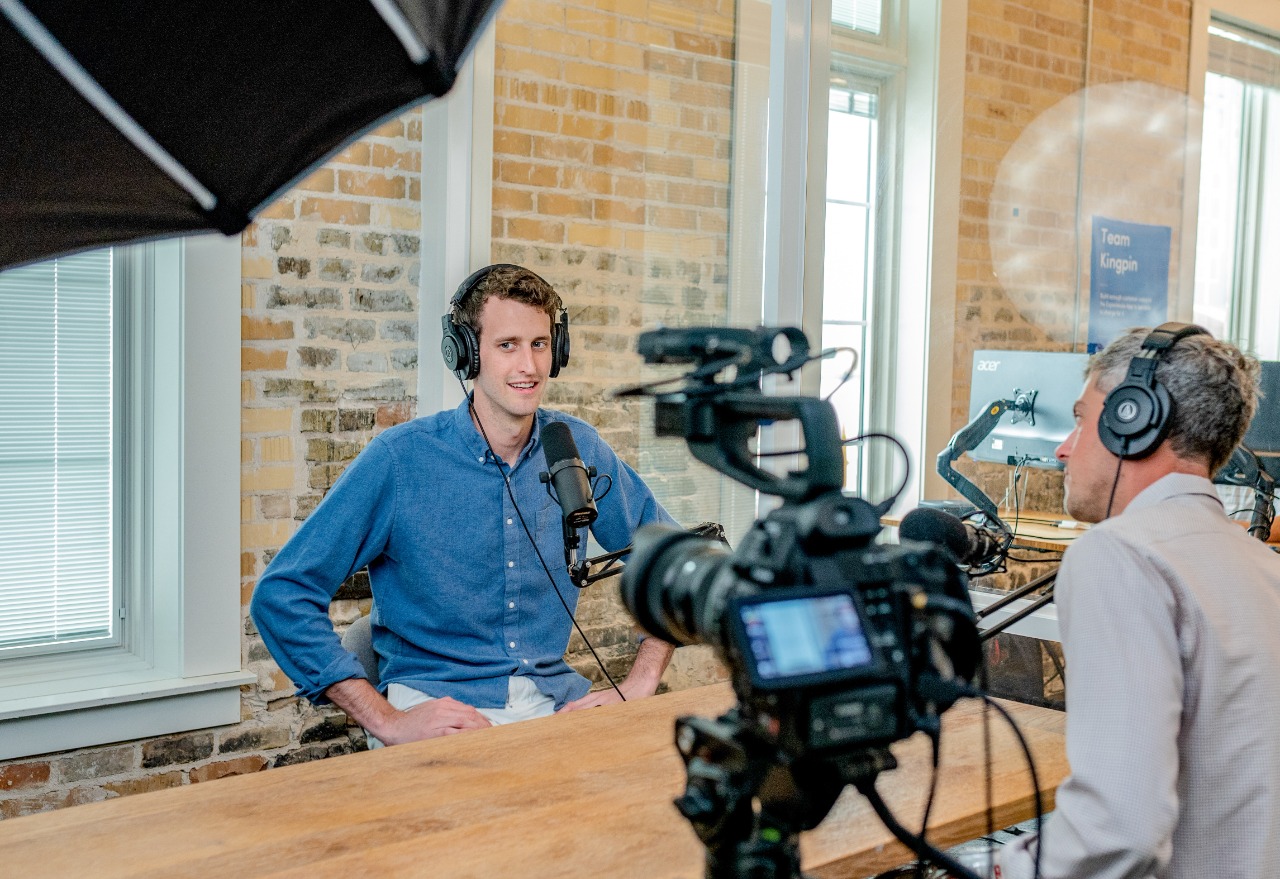Reinventing Video Interviews
When creating videos, few things come close to establishing credibility and building a connection with the audience like a professionally produced video interview. The conversational and interactive nature of interviews instantly make them more captivating and shareable than any form of communication.
Interviews provide visual context when you’re trying to inform your audience of something new or unknown. They create an opportunity for real people to tell real stories that your audience can relate to. And they’re an invaluable tool that can be used for a number of initiatives in the organisation like PR, recruitment, corp comm, sales and thought leadership.
But the moment we mention interviews, people immediately start picturing a ‘talking-head’ in their minds. This is one of the most common web formats — a format in which the speaker talks to the camera, either directly facing it, or looking away at a 45 degree angle.

Now, talking heads usually have one person talking on camera. The most common format is the interview / interactive conversation – where you typically have at least two people talking to each other. As a point of reference, one of the most influential talk-show hosts to popularize this has been Oprah Winfrey. Statista’s report on Social Media and User Generated Content showed: in the United States alone, over 17 million individuals watched Oprah’s royal interview with the Duchess of Sussex Meghan Markle and Prince Harry. And that’s just viewership. A well-produced interview with a well-thought-out line of questioning can transform your viewers into brand advocates. The royal interview had over 1.68 million online mentions surrounding the event, 1.36 million of them on Twitter alone.
While this format has proven to be incredibly effective, there are just a lot of interviews out there today. So, how do you make your interviews dynamic enough to engage a web audience? If you’re on the lookout for some video interview tips and tricks, here are some creative alternatives to the Classic Interview that make watching interviews a treat — even on the web.
1. Round Table Discussions
Round tables are one of the most exciting formats of interviews, as Clark Collis and Hasan Minhaj expertly demonstrate in these discussions. They give you the opportunity to bring together multiple people with different perspectives, opinions, thoughts and personalities to discuss one central topic. With a powerful moderator to steer the conversation and think on the fly, you can set the stage for a very stimulating, insightful and sometimes even humorous discussion guaranteed to win the attention and affection of your audience.
2. Non-Studio Interviews
We’ve all seen James Corden’s Carpool Karaoke, Vogue’s 73 questions and ScoopWhoop’s Off the Record. These are the perfect examples of travel-outdoor interviews done right. This format allows you to set a more informal and relaxed tone to your interview. With the right script, questions and interviewee, these videos can be entertaining as hell and can even give the audience a glimpse of an unguarded and genuine speaker. Lighting and background noise can be challenging to control — but careful planning and good equipment can help you get neat looking and decent-sounding video.
3. Documentary Style Interviews
This compelling format needs no introduction. Documentaries rely on interviews as their fundamental building block, but they’re often brought to life using b-roll, archival footage and other visual elements. Unscripted conversations and spontaneous reactions create an authentic viewing experience. The format allows you to present your values, earn trust and share experiences in a way the audience finds humanising. Check out Japanese designer Oki Sato’s playful approach to design in this documentary sponsored by Braun
4. Animated Interviews
Animated videos make great explainer videos, but animated interviews take the description ‘gripping’ to a whole new level. Popularised by PBS Digital Studio’s series Blank on Blank, animated interview is a great way to repackage audio interviews, archival footage and deleted interview scenes. This format of interviews is powerful, engaging and can be used to draw a younger audience to your brand.
5. Graphics-Based Interviews
Graphics have long since been a part of explainers, event videos and product walkthroughs. But interviews? Why not? And that’s exactly what Vox did in its interview with former president of USA, Barack Obama and author, Elizabeth Kolbert. Graphics instantly enhance the look, feel and flow of the interview. They’re one of the best ways to call out numbers, stats and facts, explain simple and complex ideas/concepts, and turn even the most boring parts of the interview into appealing and engaging content.
6. The Video Podcast
A video podcast is a visual version of your audio podcast – which is usually an interview or talk show format. The biggest differentiator here is that the primary distribution medium is audio and so, the look and feel of the video stays true to a recording studio setup. The video versions are often distributed on YouTube, Vimeo, and a podcast website with the intent of amplifying reach. Take one look at veteran commentator, comedian and podcast host Joe Rogan’s Video Podcast – The Joe Rogan Experience and you’ll know exactly what we’re talking about. At this point, very few podcast directories allow video podcasts to be uploaded through their RSS feeds. However, Spotify recently built out video podcasts as a feature on their platform, which is only currently available to a handful of top shows.
When it comes to interview production, Red Bangle is an ol’ pro. If you’re looking to produce amazing video interviews around the globe, write to us your brief and we’ll get in touch. And if you are new to the interview game, get started with 5 of our top tips for shooting an incredible interview.

Leave a Reply